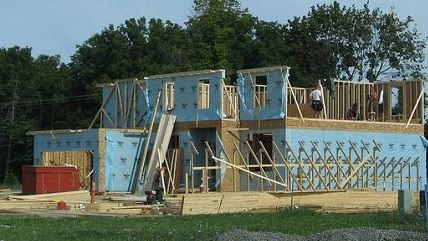California "Inclusionary Zones" Exclude Most People From Affordable Housing
The quest for affordable housing drives up costs for many for the benefit of a few

California's housing prices plummeted after the bubble burst in 2008, but now are approaching levels not seen since the market's height—especially along the Southern California coast and around San Francisco Bay. This has reignited the perennial question: What should policy makers do to promote "affordable" housing?
Earlier this month, the state Supreme Court heard arguments in a Northern California case that could have statewide impact, given that it ponders the constitutionality of one way officials promote the construction of lower-cost housing. Whatever the court decides, it's unlikely to have any noticeable effect on prices.
The issue is "inclusionary zoning." In exchange for allowing builders to construct houses, officials require them to set aside a percentage of the new houses that would be sold at below-market rates.
In San Diego, homebuilders must sell at least 10 percent of their houses at reduced rates to people who meet an earnings formula. According to the code, "The intent is to ensure that when developing the limited supply of developable land, housing opportunities for persons of all income levels are provided."
In San Jose, the subject of the court case, the city requires builders of more than 20 housing units to set aside 15 percent of them at these lower prices—or build 20 percent as low-income housing elsewhere in the city, or pay the city a fee of $122,000 for each "inclusionary" unit. The city requires the buyers of these reduced-price houses to sell them to other lower-income buyers in the future, or turn over price gains to the city.
The legal issue isn't solely about housing, but about whether cities have unlimited power to extract concessions from homebuilders for things that are not "impacts" from the project. In other words, it's legitimate for government to require new developments to pay to mitigate the effect of the new residents on local infrastructure (roads, sewers, fire service), but is it OK for cities to require affordable housing just because officials want to see more of it built?
"Under basic constitutional principles, government may not single out specific individuals or groups of property owners to bear the burden of paying for needs they didn't create, and for general social programs that are the responsibility of the entire community," said Anthony Francois, an attorney with the conservative Pacific Legal Foundation, which represents the California Building Industry Association in this case.
That's a significant constitutional issue and an important property rights issue for builders, but the policy issue is a bit different. "Builders are always going to make their margins," said Wendell Cox, a St. Louis-based housing consultant. But these rules raise the prices of market houses. "Let's talk about the people who are excluded by inclusionary zoning."
In its amicus brief, the National Association of Home Builders noted that, nationally, "a $1,000 increase in home price leads to about 232,447 households priced-out of the market for a median-priced new home. … The priced-out effect is exacerbated through government regulations and constraints on housing development. Already, regulations imposed by government at all levels account for 25 percent of the final price of a new single family home built for sale."
In a March report, the Legislative Analyst's Office reports that officials have approached the housing affordability problem in recent decades largely by subsidizing the construction of lower-cost housing — but it barely makes a dent in the problem. This suggestion is the key: "broader changes that facilitate more private housing construction."
In San Jose's county of Santa Clara, median home prices in February were $915,000. Forcing builders to sell a few units at $795,000 isn't going to do much other than give a break to a few families at the front of a waiting list.
The real answer is the one hinted at by the LAO: Make it easier for builders to build more homes of every kind and let the "housing ladder"(e.g., when people move up to fancier houses, their less-fancy houses are bought by someone else) work. However the court rules, policy makers ought to look more at markets and less at dictates.


Show Comments (29)